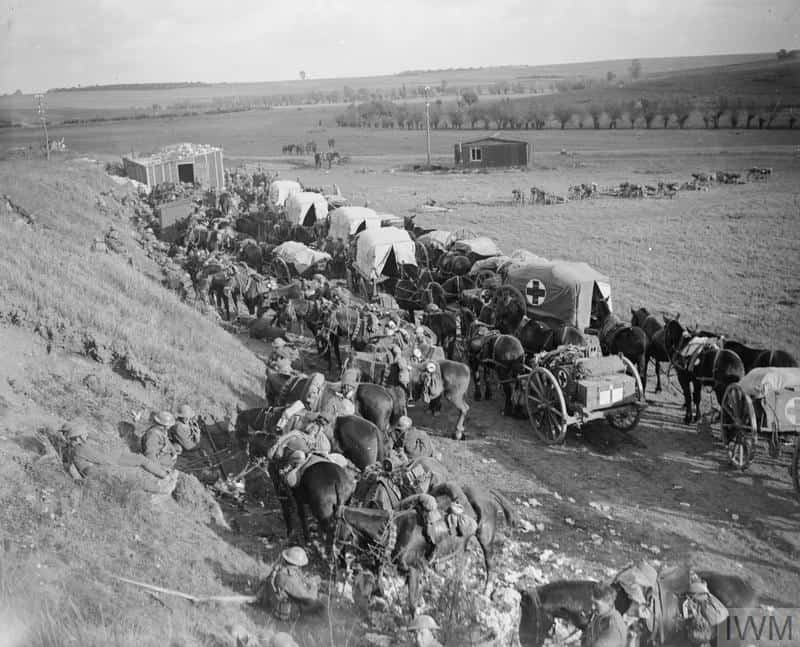Hindenburg Line
A series of very large scale offensive operations that advance to and break the Hindenburg Line system. Carried out by the First, Third and Fourth Armies these victories rank among the greatest-ever British military achievements. The German Army fights on but it is increasingly clear that their ability to do so is declining fast. Canadian, Australian, New Zealand and the United States Divisions all play key parts.
The Honour was awarded to the 3rd Hussars.
Canal du Nord
The Battle of Canal du Nord was part of the Hundred Days Offensive of the First World War by the Allies against German positions on the Western Front. The battle took place in the Nord-Pas-de-Calais region of France, along an incomplete portion of the Canal du Nord and on the outskirts of Cambrai between 27 September and 1 October 1918.
The Honour was awarded to the 3rd Hussars.
Detail
Hindenburg Line
The offensive opened with a heavy bombardment along the whole front, on the night of the 26th of September, and at 5.30 the next morning the first and Third Armies moved towards the Canal du Nord and the Hindenburg Line.
By the evening, 10,000 prisoners and 200 guns had been taken, and the leading divisions were within sight of Cambrai.
The 3rd Hussars spent most of the nine days’ battle in support of the New Zealand Division. With them, they took part in the attack on Crevecoeur, east of the St Quentin Canal, and it was there that Capt JJ Dobie, DSO, MC, the gallant commander of ‘C’ Squadron, already wounded three times, was killed. Another officer, Lt WG Petherick, and a trooper were wounded at the same time.
The regiment was spared further casualties until the 9th of October. Again ‘C’ Squadron was the victim: while galloping forward to secure a knoll just south-west of Fontaine-au-Pire, near Beauvois, Lt Craig’s troop drew heavy machine-gun fire from the village.
Craig himself was wounded, as were 7 of his men, and 2 men and 12 horses were killed.
Canal du Nord
The Battle of the Canal du Nord took place along an incomplete portion of the Canal du Nord and on the outskirts of Cambrai between 27 September and 1 October 1918.
To avoid the risk of having extensive German reserves massed against a single Allied attack, the assault along the Canal du Nord was undertaken as part of a number of closely sequenced Allied attacks at separate points along the front.
It began one day after the Meuse-Argonne Offensive, one day before an offensive in the Flanders region of Belgium, and two days before the Battle of St. Quentin Canal.


